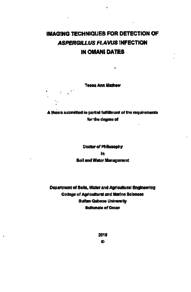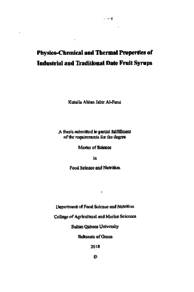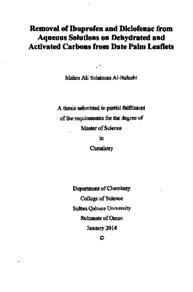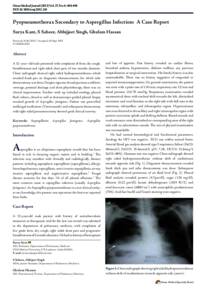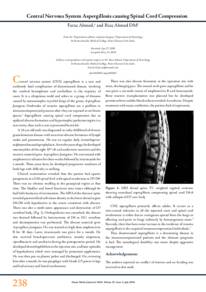وثيقة
Imaging Techniques For Detection Of Aspergillus Flavus Infection In Omani Dates
الناشر
Sultan Qaboos University
ميلادي
2015
اللغة
الأنجليزية
الملخص الإنجليزي
Detection of early stages of microbial infection on dates in processing and handling facilities by the present manual sorting method is not accurate. Fungal infection in date fruits causes possible mycotoxin production. Therefore, it is crucial to develop and implement a fast, non-destructive, objective, accurate and real-time technique to detect fungal infection in date handling facilities. The potential of three computer vision techniques such as Near infrared hyperspectral imaging (NIR-HSI), Near infrared (NIR) areascan imaging and RGB color imaging to detect A. flavus infection on dates in Oman was investigated. Several algorithms were developed and analyzed to detect and classify fungal infection. Also, the scope for methodology and implementation of the developed techniques on commercial aspect were investigated.
Three popular date varieties (Fard, Khalas and Naghal) were used for this study. The samples were treated as three groups; untreated control (UC), sterile control (SC-surface sterilized, washed and air-dried) and infected samples (IS-surface sterilized, washed, air-dried and fungus inoculated). Images were taken from infected samples on every alternate day during the incubation period of ten days. After pre-processing and image segmentation, significant features were extracted from the date images and applied to the statistical classifiers (linear discriminant analysis (LDA) and quadratic discriminant analysis (QDA)). Also classification was carried out with only the top five most contributing features using stepwise linear discriminant analysis (SLDA) and stepwise quadratic discriminant analysis (SQDA). Two-class models (control vs. infected dates), six-class models (control, IS Day 2, IS Day 4, IS Day 6, IS Day 8 and IS Day 10) and pair-wise models (control vs. each stage of infection) were developed.
Hyperspectral images of control and infested samples were acquired from 75 image slices at 10 nm intervals between 960 and 1700 nm. A total of 64 features were extracted from the top four most significant wavelengths (1120 nm, 1300 nm, 1610 nm and 1650 nm), having 10 histogram features and 6 statistical features at 4 wavelengths. The iS of Khalas dates obtained average accuracies of 100%, 92% and 100% for two-class, six-class and pair-wise models, respectively. In general, QDA obtained better accuracy than LDA in all the classification models tested. Further work is required to test the efficiency of this technique for other date fruit varieties.
BCV
The near infrared area-scan imaging acquired a single image from 900 to 1700 nm. A total of 55 features (11 histogram features, 36 histogram groups and 8 texture features) were extracted from 3,150 images of dates. The overall highest classification accuracy for IS was 97% 96% and 100% for two-class, six-class and pair-wise models, respectively. The developed algorithm was tested on pooled dates (all three varieties combined) and 86% of IS were correctly classified. LDA obtained better classification accuracy than QDA.
In RGB color imaging, 16 features (11 histogram features and 5 textural features) from red, green, blue and grey components (total: 16x4=64 features) were extracted from RGB color images and applied to the statistical classification models. In two-class model, the highest accuracy obtained by Fard, Khalas and Naghal dates were 97%, 100% and 99%, respectively. In pooled dates, 99% of IS were correctly classified from control. In general, using reduced features by SLDA and SQDA, the classification accuracies obtained were less than LDA and QDA in most of the tested models.
All three imaging techniques developed in this study were effective for early detection of A. flavus on date fruits even before developing any visible symptoms. However, RGB color imaging can be effectively used as the least expensive and convenient imaging system to detect and classify fungus infected date fruits from healthy dates. Further studies are required to investigate the effect of moisture content, hardness, maturity stages and skin delamination of date fruits in the discrimination of healthy and fungus infected samples. The effectiveness of the developed algorithms should also be tested for other species of fungus infection in dates.
المجموعة
URL المصدر
الملخص العربي
يتم فرز التمور المصابة بالميكروبات في مراحل التصنيع والتعبئة فرزا يدويا، إلا أن هذه الطريقة من الفحص غير دقيقة. الهدف من هذه الدراسة هو تحديد إمكانية الكشف عن التمور المصابة بفطر (Aspergillus flavus)، قد تؤدي الإصابة الفطرية في التمور إلى إنتاج سموم فطرية، لذلك كان من الضروري ابتكار وتطبيق تقنية سريعة، غير مؤثره على الشكل الخارجي للتمور، ودقيقة للكشف عن الإصابة الفطرية للتمور في المصانع. تم تقيم جودة ثلاث أنواع من تقنيات التصوير: تقنية التصوير بالأشعة تحت الحمراء ذات النطاقات الطيفية ، وتقنية التصوير بالأشعة تحت الحمراء ذات خاصية مسح المناطق، وتقنية التصوير الملون ( RGB) في الكشف عن الإصابات الفطرية. وقد تم تطوير عدة نماذج حاسوبية التقييم وفرز الإصابات الفطرية ، وايضا تم التحقق من منهجية وآلية تطبيقها من الناحية الإقتصادية.
حيث تم تطبيق الدراسة على ثلاث أصناف من التمور المفضلة في سلطنة عمان، وهي الفرض والخلاص والنغال. تم تقسيم العينات إلى ثلاث مجموعات: عينات سليمة، وعينات معقمة ( تم تعقيمها ثم غسلها بالماء وتجفيفها)، وعينات مصابة (تم تعقيمها ثم غسلها بالماء وتجفيفها ثم تلقيحها يدويا بالفطريات). تم تصوير العينات المصابة يوميا، خلال مدة احتضان الفطر وقدرها 10 أيام. ثم تم تحليل الصور واستخراج الخصائص المميزة لكل نوع من العينات. وبعد ذلك تم تحليل البيانات إحصائيا عن طريق تحليل التمايز الخطي و تحليل التمايز من الدرجة الثانية. كما تم تطبيق تحليل التمايز الخطي التدريجي، والتمايز من الدرجة الثانية التدريجي اللذان تم فيهما التصنيف على أساس أفضل 5 خصائص مميزة لكل عينة من عينات الدراسة. وبعد ذلك تم فرز وتمييز العينات بعدة معايير وهي التصنيف الثنائي بين العينات المصابة والعينات السليمة، والتصنيف السداسي (العينات السليمة والعينات المصابة على خمس فترات زمنية) والتصنيف المزدوج (الذي يشمل تصنيف العينات السليمة مقابل أحد العينات المصابة في الفترات الزمنية المختلفة، كل على حدة).
عند تصوير العينات السليمة والعينات المصابة بالأشعة تحت الحمراء ذات النطاقات الطيفية الفائقة، تم الحصول على الصورة الواحدة من خلال أخذ 75 مقطع كل 10 نانومتر في حدود الطول الموجي بين 9601700 نانومتر. حيث تم استخراج 64 خاصية من أفضل 4 أطوال موجية (1120، 1300, 1610، 1650 نانومتر) و 16 خاصيه (10 خواص بيانية + 6 خواص إحصائية أو تركيبة). وتم تحقيق نسبة 100% و 92% و 100% لتمور الخلاص السليمة في التصنيف الثنائي والسداسي والمزدوج على التوالي. بشكل عام تم الحصول على أفضل النسب في تحليل التمايز من الدرجة الثانية أكثر من تحليل التمايز الخطي في كل نماذج التصنيف. ويوصى بالمزيد من الدراسات للتحقق من فعالية هذه التقنية من التصوير في أصناف أخرى من الفواكه.
أما في تقنية التصوير بالأشعة تحت الحمراء، فقد تم إلتقاط الصور ضمن الطول الموجي من 900-1700 نانومتر. وتم إستخراج 55 خاصية مميزة (11 خاصية بيانية، 36 مجموعة بيانية،8 خواص تركيبية) من 3150 صورة ملتقطة. وقد حقق تصنيف التمور المصابة 97% و 96% و 100% للتصنيف الثنائي والسداسي والمزدوج على التوالي. كما تم فحص البرنامج المطور في جميع الأصناف الثلاثة من التمور مع بعضها البعض، وحقق تصنيف التمور المصابة على 86% من الدقة . كذلك كان تحليل التمايز من الدرجة الثانية افضل من تحليل التمايز الخطي.
أما بالنسبة للتصوير الملون (RGB) ، فقد تم إستخراج 16 خاصية (11 خاصية بيانية و 5 خواص تركيبية) في كل من الطبقة الحمراء والخضراء والزرقاء والرمادية المكونة للصورة الملونة ( المجموع: 16× 4 = 64 خاصية). وتم الحصول على دقة وصلت إلى 97% و 100% و 99% لكل من الفرض والخلاص والنغال على التوالي. كما نجح البرنامج في فرز 99% من التمور المصابة عند تجميع جميع أصناف التمور المستخدمة في الدراسة. كما أنه وفي معظم عمليات التصنيف، كان دقة التحليل التمايز الخطي SLDA والثنائي sQDA التدريجي باستخدام عدد قليل من الخصائص المستخرجة أقل من التحليل التمايز الخطي LDA والثنائي QDA باستخدام كافة الخصائص.
حيث أثبتت جميع تقنيات التصوير الثلاثة المستخدمة في الدراسة فعاليتها في الكشف المبكر عن التمور المصابة بفطر A . flavus . وتظهر فعاليتها في الكشف عن الإصابة الفطرية حتى قبل أن تتضح أعراض الإصابة في التمور. وتعد تقنية التصوير الملون (RGB) أكثر التقنيات فعالية من حيث أنها أقل تكلفة وأكثر ملائمة لفرز التمور المصابة من السليمة. نوصي بدراسات إضافية للكشف عن تأثير نسبة الرطوبة، والصلابة، ومراحل النضج وتقشر التمور في تصنيف التمور السليمة والمصابة. كما نوصي بفحص فعالية النماذج الحسابية المبتكرة في تصنيف أنواع اخرى من الإصابات الفطرية في التمور.
حيث تم تطبيق الدراسة على ثلاث أصناف من التمور المفضلة في سلطنة عمان، وهي الفرض والخلاص والنغال. تم تقسيم العينات إلى ثلاث مجموعات: عينات سليمة، وعينات معقمة ( تم تعقيمها ثم غسلها بالماء وتجفيفها)، وعينات مصابة (تم تعقيمها ثم غسلها بالماء وتجفيفها ثم تلقيحها يدويا بالفطريات). تم تصوير العينات المصابة يوميا، خلال مدة احتضان الفطر وقدرها 10 أيام. ثم تم تحليل الصور واستخراج الخصائص المميزة لكل نوع من العينات. وبعد ذلك تم تحليل البيانات إحصائيا عن طريق تحليل التمايز الخطي و تحليل التمايز من الدرجة الثانية. كما تم تطبيق تحليل التمايز الخطي التدريجي، والتمايز من الدرجة الثانية التدريجي اللذان تم فيهما التصنيف على أساس أفضل 5 خصائص مميزة لكل عينة من عينات الدراسة. وبعد ذلك تم فرز وتمييز العينات بعدة معايير وهي التصنيف الثنائي بين العينات المصابة والعينات السليمة، والتصنيف السداسي (العينات السليمة والعينات المصابة على خمس فترات زمنية) والتصنيف المزدوج (الذي يشمل تصنيف العينات السليمة مقابل أحد العينات المصابة في الفترات الزمنية المختلفة، كل على حدة).
عند تصوير العينات السليمة والعينات المصابة بالأشعة تحت الحمراء ذات النطاقات الطيفية الفائقة، تم الحصول على الصورة الواحدة من خلال أخذ 75 مقطع كل 10 نانومتر في حدود الطول الموجي بين 9601700 نانومتر. حيث تم استخراج 64 خاصية من أفضل 4 أطوال موجية (1120، 1300, 1610، 1650 نانومتر) و 16 خاصيه (10 خواص بيانية + 6 خواص إحصائية أو تركيبة). وتم تحقيق نسبة 100% و 92% و 100% لتمور الخلاص السليمة في التصنيف الثنائي والسداسي والمزدوج على التوالي. بشكل عام تم الحصول على أفضل النسب في تحليل التمايز من الدرجة الثانية أكثر من تحليل التمايز الخطي في كل نماذج التصنيف. ويوصى بالمزيد من الدراسات للتحقق من فعالية هذه التقنية من التصوير في أصناف أخرى من الفواكه.
أما في تقنية التصوير بالأشعة تحت الحمراء، فقد تم إلتقاط الصور ضمن الطول الموجي من 900-1700 نانومتر. وتم إستخراج 55 خاصية مميزة (11 خاصية بيانية، 36 مجموعة بيانية،8 خواص تركيبية) من 3150 صورة ملتقطة. وقد حقق تصنيف التمور المصابة 97% و 96% و 100% للتصنيف الثنائي والسداسي والمزدوج على التوالي. كما تم فحص البرنامج المطور في جميع الأصناف الثلاثة من التمور مع بعضها البعض، وحقق تصنيف التمور المصابة على 86% من الدقة . كذلك كان تحليل التمايز من الدرجة الثانية افضل من تحليل التمايز الخطي.
أما بالنسبة للتصوير الملون (RGB) ، فقد تم إستخراج 16 خاصية (11 خاصية بيانية و 5 خواص تركيبية) في كل من الطبقة الحمراء والخضراء والزرقاء والرمادية المكونة للصورة الملونة ( المجموع: 16× 4 = 64 خاصية). وتم الحصول على دقة وصلت إلى 97% و 100% و 99% لكل من الفرض والخلاص والنغال على التوالي. كما نجح البرنامج في فرز 99% من التمور المصابة عند تجميع جميع أصناف التمور المستخدمة في الدراسة. كما أنه وفي معظم عمليات التصنيف، كان دقة التحليل التمايز الخطي SLDA والثنائي sQDA التدريجي باستخدام عدد قليل من الخصائص المستخرجة أقل من التحليل التمايز الخطي LDA والثنائي QDA باستخدام كافة الخصائص.
حيث أثبتت جميع تقنيات التصوير الثلاثة المستخدمة في الدراسة فعاليتها في الكشف المبكر عن التمور المصابة بفطر A . flavus . وتظهر فعاليتها في الكشف عن الإصابة الفطرية حتى قبل أن تتضح أعراض الإصابة في التمور. وتعد تقنية التصوير الملون (RGB) أكثر التقنيات فعالية من حيث أنها أقل تكلفة وأكثر ملائمة لفرز التمور المصابة من السليمة. نوصي بدراسات إضافية للكشف عن تأثير نسبة الرطوبة، والصلابة، ومراحل النضج وتقشر التمور في تصنيف التمور السليمة والمصابة. كما نوصي بفحص فعالية النماذج الحسابية المبتكرة في تصنيف أنواع اخرى من الإصابات الفطرية في التمور.
قالب العنصر
الرسائل والأطروحات الجامعية

